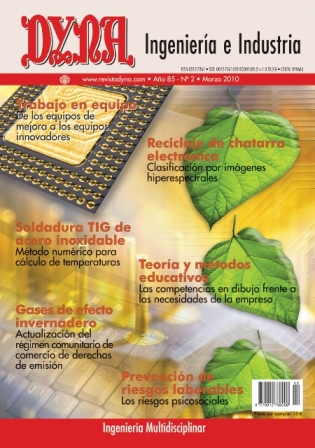A COMPUTER TOOL FOR THE DESIGN AND EXECUTION OF THE COLLABORATIVE PLANNING PROCESS IN SUPPLY CHAINS ( 1st part)
Keywords:
Planificación Colaborativa, Cadena de Suministro, Integración Espacial y Temporal, Modelos de Programación Matemática, Herramienta Informática.Abstract
• Introduction: Collaborative Planning (CP) in Supply Chains (SCs) is concerned with the coordination of planning and control operations across different members of the SC. Collaboration implies a simultaneous coordination of decisions made by Decision Centers (DCs) of the same temporal level (spatial integration) and those made by DCs of different temporal levels (temporal integration). The present paper describes the characteristics of a computer tool developed for CP in SCs with one or more DCs that make their decision based on Mathematical Programming Models (MPM). In this context it will be necessary to properly define the coordination mechanisms in such a way that both, the SC efficiency and the customer service level, increases. • Methods: The computer tool sequentially collects those relevant SC information for the design phase of the MPMs, that will support the decision making of every DC, in a guided, intuitive and friendly way for the user. The identification of the information needed by the computer tool is based on an existing Conceptual Framework for the CP that considers that SCs are characterized by the specifiation of five views (Physical, Organization, Decision, Function and Information View). The collection information sequence is based on a methodology for the design of the CP process in SCs. During the execution phase, the resolution sequence of the MPMs of each DC is obtained from the information contained in functional view. • Results: The result is a computer tool that supports the user in the analysis, characterization an decision making in CP of any SC. The computer tool assists the model-maker in the development of the corresponding mathematical programming models (MPMs) of each DC, including the interdependences among them in an easily and structured fashion. Then, the resolution of each DC MPM is made in the real sequence defined in the CP Process trough the Function View. • Discussion: The main contributions of the developed application are: to make possible both spatial and temporal integration simultaneously for any SC, in a context of either centralized or distributed decision-making in CP; to facilitate the development of the MPMs that contribute to the optimization of the SC through a more rational decision-making; to allow the analysis and evaluation of different coordination mechanisms among DCs, redefining, with little effort, either the information flows among them and/or the sequence of execution of the DCs MPMs.Downloads
Published
2010-03-30
Issue
Section
ARTICULOS

